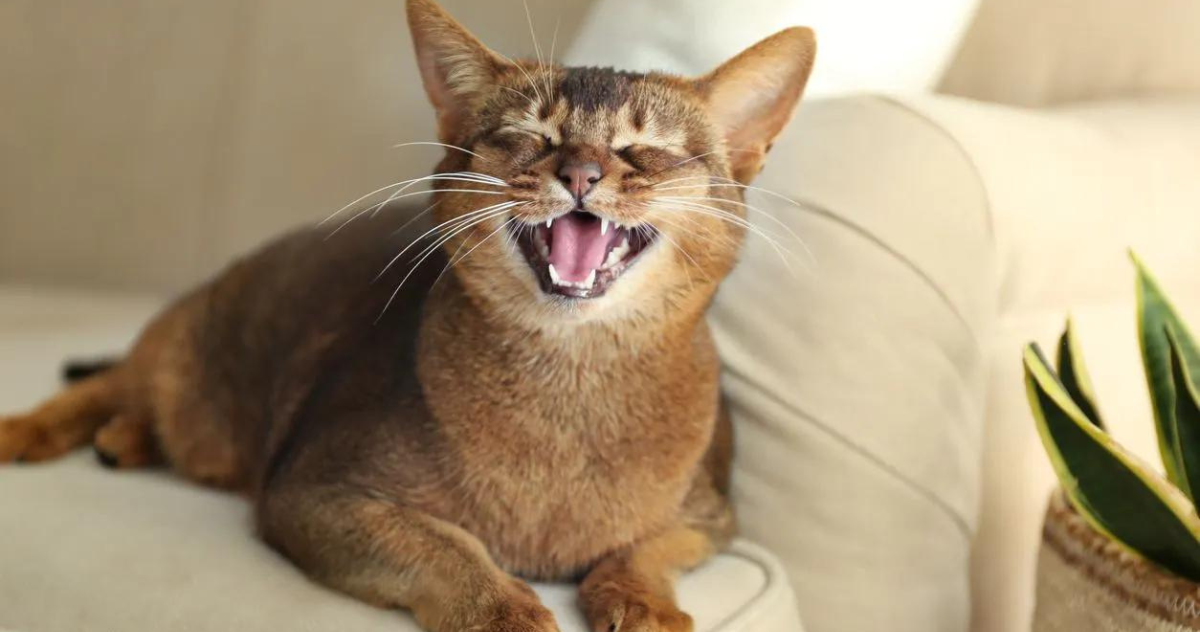Maintaining your cat’s oral health is essential for their overall well-being. Just like humans, cats can experience dental problems, and one common issue is the discoloration of their teeth. When your feline friend’s teeth are not pearly white, it might indicate underlying oral health issues. In this article, we will explore the various symptoms, causes, and the diagnostic process for discolored teeth in cats. So, let’s start to address the query of “Why are my cat’s teeth yellow?
Identifying Symptoms of Discolored Teeth
To ensure your cat’s oral health, it’s crucial to be vigilant and observe their dental condition regularly. By doing so, you can detect symptoms as soon as they arise. Here are some common signs to look out for:
- Visible Cavities: Obvious holes or openings in your cat’s teeth
- Yellow or Brown Tartar (Calculus): The presence of yellow or brown deposits on their teeth
- Purple or Pink Shade to Teeth: Unusual discoloration of the teeth, often indicating an issue
- Cracked or Broken Teeth: Chipped or fractured teeth can lead to discoloration.
- Red Gums: Inflamed or red gums can be a sign of gum disease
- Recessed Gums: Gums pulling away from the teeth, leaving them exposed
- Bleeding from Mouth: Any bleeding from the mouth should be a cause for concern
- Drooling: Excessive drooling can indicate oral discomfort
- Bad Breath: Foul-smelling breath can be a symptom of dental issues
- Difficulty Eating: If your cat struggles with eating or avoids certain foods, it may be related to dental problems
- Wobbly Teeth: Loose or unstable teeth can lead to discoloration
Why Are My Cats Teeth Yellow?
Understanding the root causes of discolored teeth in cats is essential to address the issue effectively. Several factors can contribute to this problem, with the most common being:
- Periodontal Disease: This is a prevalent cause of dental issues in cats. It involves the inflammation of the gums and the accumulation of plaque and tartar
- Trauma to the Face or Mouth: Accidents or injuries that affect the teeth or oral tissues can lead to discoloration
- Brachycephalic (Short-Nosed) Cat Breeds: Certain cat breeds with shorter noses are more prone to dental problems
- Tartar Buildup: The accumulation of tartar on the teeth can result in discoloration and further complications
- Diet, Especially Exclusively Wet Food: The type of food your cat consumes can impact their dental health. An exclusive wet food diet can lead to dental issues
- Abnormal Tooth Formation: Some cats may develop dental problems due to abnormal tooth development
- Trauma or Injury: Accidents or injuries that involve the mouth can cause tooth discoloration and other oral problems
- Oral Tumor: Tumors in the mouth can affect tooth color and overall oral health.
- Pulpal Hemorrhage: Bleeding within the tooth pulp can cause discoloration
Diagnosing Discolored Teeth in Cats
If you notice any of the aforementioned symptoms in your cat’s teeth, it’s crucial to seek professional veterinary care. The diagnostic process is essential for determining the underlying issue and developing an appropriate treatment plan.
- Vet Examination: When you bring your cat to the vet, its teeth will be examined as part of a routine annual check-up. If you’ve noticed discoloration and have sought an appointment sooner, the vet will conduct an oral examination
- Detailed History: The vet will inquire about when you first noticed the discoloration on your cat’s teeth. This information helps in understanding the progression of the issue
- Assessment After Trauma: If your cat has experienced trauma, a comprehensive body assessment may be required to ensure there are no life-threatening issues related to the injury
- Radiographs (X-rays): X-rays are essential for assessing any reduction in bone density of the teeth and evaluating the roots. This is a vital step in identifying underlying issues
- Periodontal Probe: A periodontal probe or “shepherd’s hook” may be used to evaluate the affected teeth. This tool helps the vet assess the depth of any gum pockets and identify potential areas of concern
- Pre-Anesthetic Blood Work: Before any dental treatment, your cat’s suitability for general anesthesia must be determined. This is especially important for older cats. Blood work, including a complete blood count and a biochemical profile, will be performed to ensure your cat can undergo the necessary procedures safely
- Evaluation of Liver and Kidneys: The health of your cat’s liver and kidneys will be assessed before dental treatment commences, as underlying issues in these organs can affect anesthesia and treatment outcomes
Conclusion: Why Are My Cats Teeth Yellow?
Maintaining your cat’s oral health is of utmost importance to ensure their overall well-being. Discolored teeth can indicate underlying issues, including periodontal disease, trauma, and other dental problems. By recognizing the symptoms and causes and seeking prompt veterinary care, you can help your feline friend regain their bright, healthy smile. Remember to schedule regular vet visits and keep a close eye on your cat’s dental hygiene to ensure they enjoy a lifetime of strong, healthy teeth. If you wonder, “Why are my cat’s teeth yellow?” It’s essential to address this question promptly to ensure your pet’s oral health.



